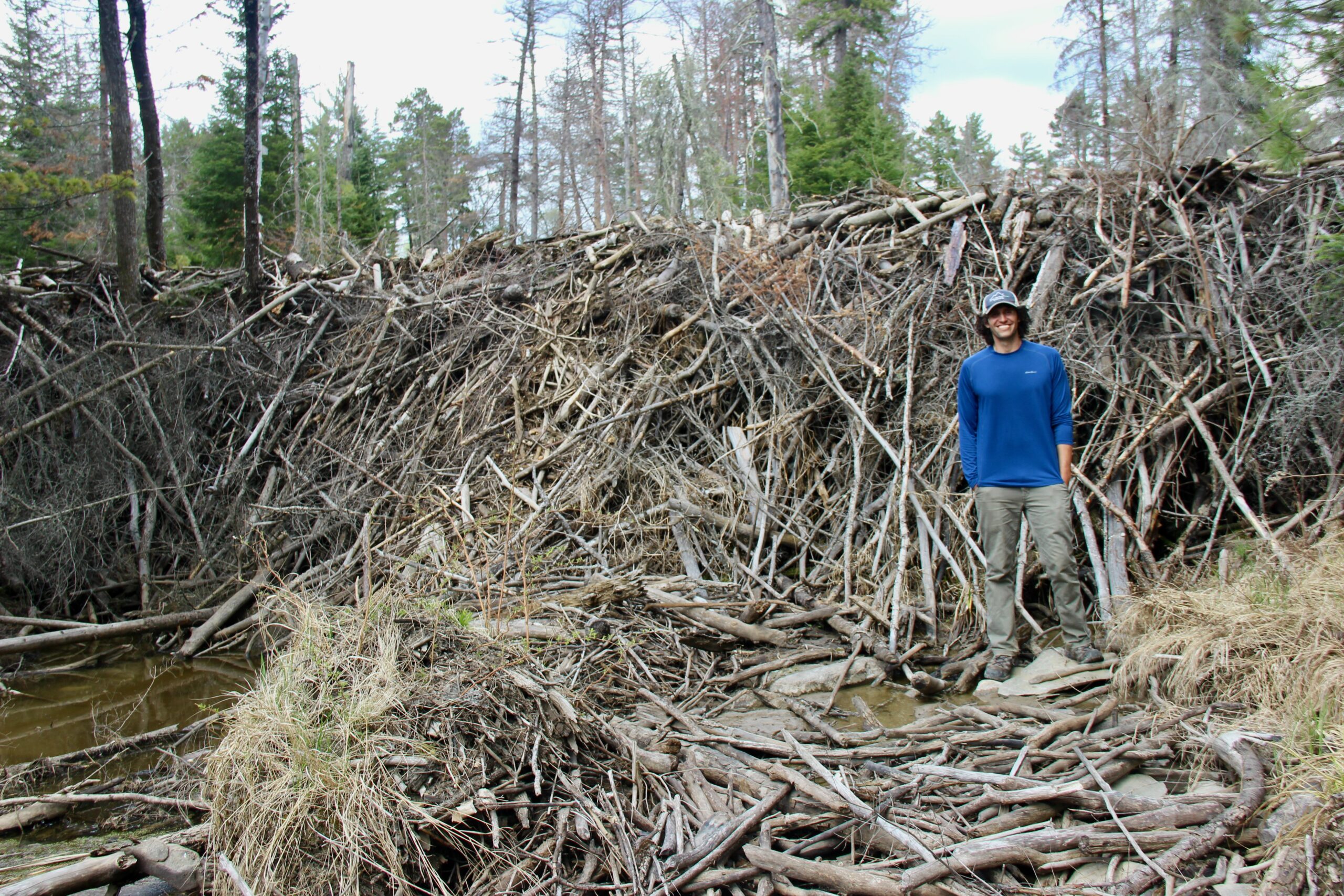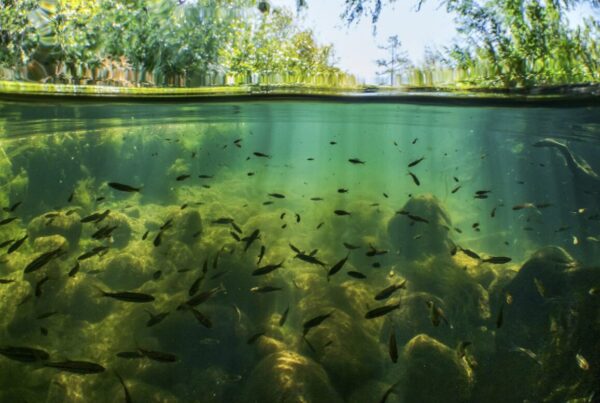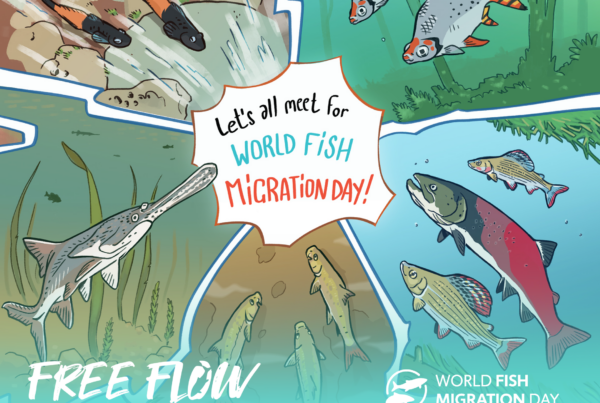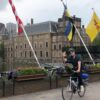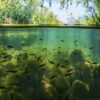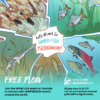As we prepare for World Fish Migration Day 2024, and its Free Flow theme, we at World Fish Migration Foundation have started ‘Free Flow Champions’, an initiative aimed to raise the profile of people championing freer flowing rivers. Our champion in December was Ben Goldfarb!
Ben Goldfarb is an independent conservation journalist and the author of “Eager: The Surprising, Secret Life of Beavers and Why They Matter”. Ben just released his new book “Crossings: How Road Ecology Is Shaping The Future of Our Planet” where he discusses the impact of road barriers on terrestrial and aquatic wildlife. Among these road barriers, Ben talks about culverts and their devastating consequences on fish migration and riverine habitat fragmentation. Read Ben’s interview to discover more about beavers and culverts!
You recently published a book called Crossings, what is that all about?
My new book, “Crossings: How Road Ecology Is Shaping the Future of Our Planet”, is about how roads shape nature, and what we can do to make our infrastructure less devastating to ecosystems and wildlife. Roadkill is the most conspicuous harm inflicted by highways, of course — we have all seen dead deers, squirrels, or raccoons along the verge — but the damage goes far deeper. There is the genetic fragmentation caused by impenetrable walls of traffic, the noise pollution that is functionally a form of habitat loss, the deicing salt that is turning rivers and lakes brackish — and, of course, the undersized and derelict stream crossings that thwart anadromous fish. Yet this book isn’t just about ecological problems — it’s also about solutions. What will it take to build wildlife crossing structures that reconnect fractured animal populations? Why must we deconstruct the abandoned forest roads that are bleeding silt into salmon-bearing streams across the western United States? And how do we retrofit or replace the countless culverts that distort aquatic ecosystems and block fish migrations around the world? We have fettered the planet with forty million miles of roads; this book is about how we break free.
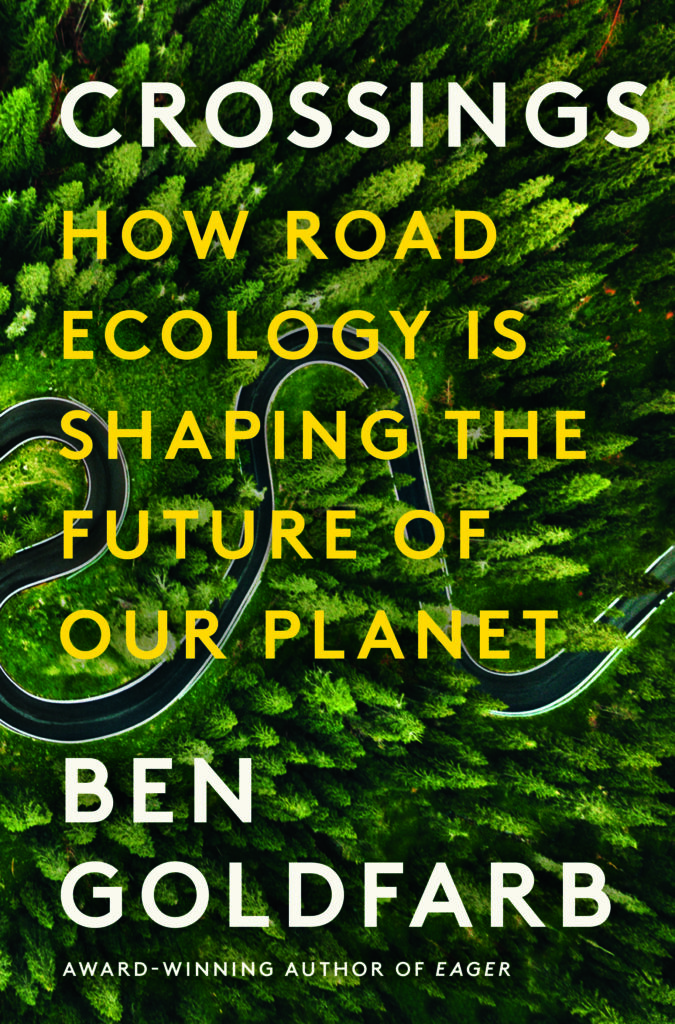
The cover of Ben’s latest book called “Crossings: How road ecology is shaping the future of our planet” (© Ben Goldfarb).
Why did you decide to research and write a book about roads?
It all goes back to an experience I had in 2013 while writing a series of articles about habitat fragmentation and connectivity in the Northern Rocky Mountains. During that reporting trip, I had the opportunity to stand atop a wildlife overpass in Montana that the state, in collaboration with the Confederated Salish and Kootenai Tribes, had built to permit creatures such as bears, elk, and deer to safely cross a busy highway. Visiting that overpass was a formative experience for two reasons. First, it helped me recognize that roads, for all the human mobility they facilitate, are often insurmountable barriers for wildlife; and second, it demonstrated that smarter infrastructure can help to heal the ecological wounds that highways inflict. I’m not sure I decided to tackle a book about roads that very day, but I’ve been thinking and writing about them in some form ever since.
What was the most surprising or interesting thing you learned about culverts in your book research?
Mostly I was astonished by their ubiquity! There are something like two million culverts in the United States alone, and many of us drive over dozens of them every day. But they’re largely invisible to us; I’m always amazed by how many people give me a blank look when I even say the word “culvert.” I doubt that many Americans, when pressed to mention a threat to salmon and other fishes, would mention the uncountable concrete and metal pipes that undergird our highways — yet there are perhaps no structures that deny more fish access to more habitat than faulty culverts. They truly inflict death by a thousand cuts.
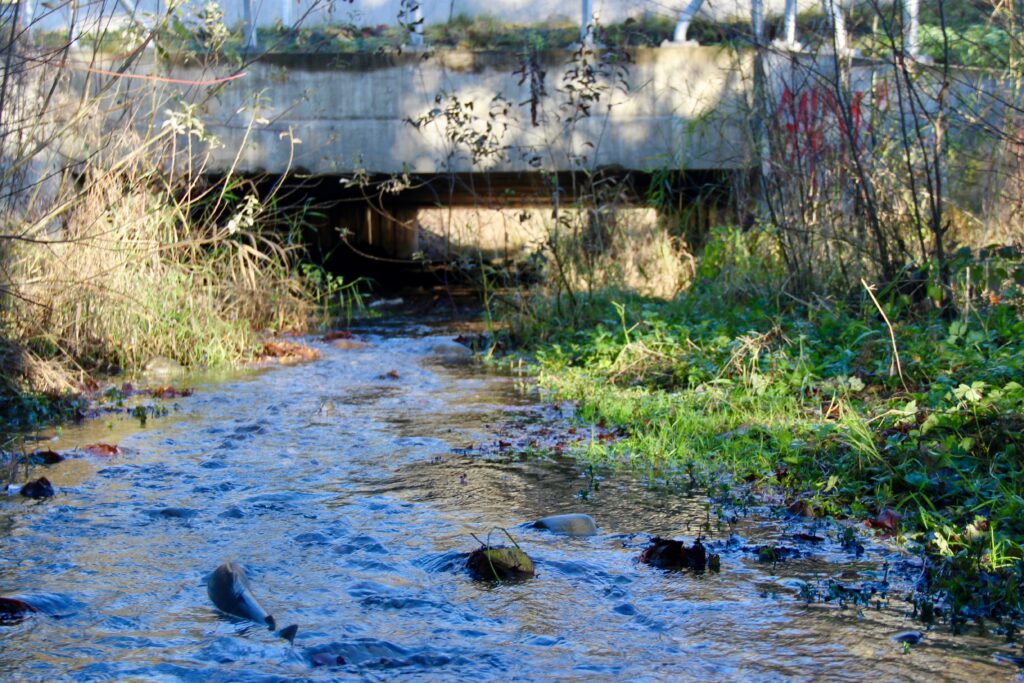
The chum salmon is swimming upstream towards the retrofitted culvert (© Ben Goldfarb).
You also wrote a book about beavers, what do beavers have to do with free-flowing rivers?
Anglers and fish biologists often accuse beaver dams of impeding fish migration — aren’t we trying to take blockages out of rivers right now? But of course a woody beaver dam is nothing like a human-built concrete dam. Fish have evolved all kinds of clever strategies for overcoming beaver dams, whether that’s swimming around them during periods of high flow, wriggling through them, or leaping over them. As the expression goes: Beavers taught salmon to jump! Far from harming fish, in fact, beavers provide fabulous rearing habitat for juvenile trout and salmon, which shelter in the deep pools, side channels, and other complex slow-water refuges that these industrious rodents create. Beaver restoration is thus one of the most important steps we can take on behalf of anadromous fish in North America and Europe — along with the removal of concrete dams, culverts, and other anthropogenic barriers to fish passage.
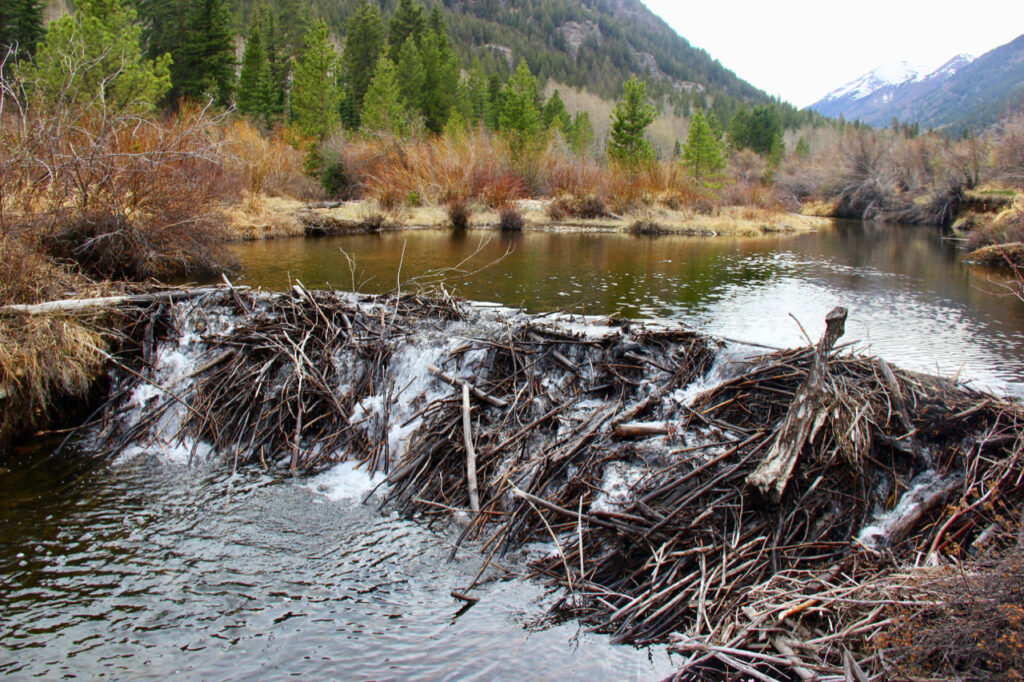
Woody beaver dams in North America (© Ben Goldfarb)
What is your favourite or most unbelievable beaver or culvert story you learned in your research?
I’ll give you one of both! A favorite beaver story: In 2016, a pair of canoeists in Wisconsin pulled a prosthetic leg out of a beaver dam. Incredibly, they searched on Craigslist and found the leg’s owner, a man who’d lost his prosthesis when his own canoe tipped a month earlier. Apparently, there’s truly nothing that these paddle-tailed landscape architects won’t use. And a culvert story I dug out of some old newspaper archives, but that didn’t make it into the book: In 1932, engineers in Arlington Heights, Illinois, found a pair of pickerel that had somehow become stranded in culverts after the adjacent stream dried up. The tale was verified by one Ransom Kennicott, who reportedly enjoyed “a nice fish dinner.” Not the most mind-blowing tidbit, perhaps, but proof that culverts have been inconveniencing fish for nearly a century now!
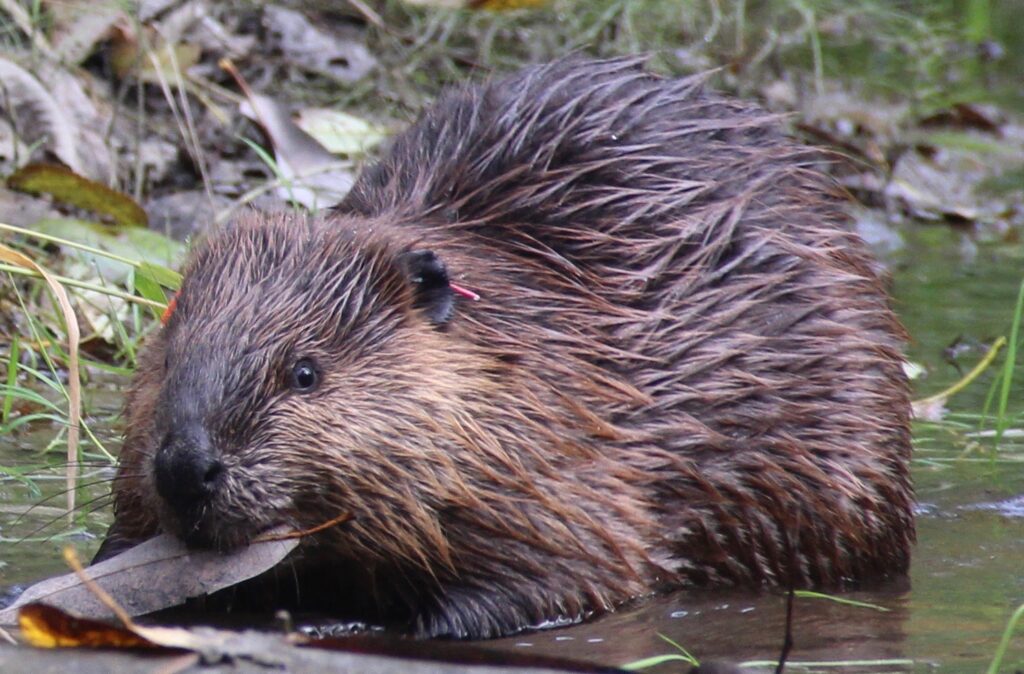
A beaver collecting leaves and sticks to build a dam (© Ben Goldfarb)
What is one thing you would like people to know about road impacts on freer-flowing rivers?
I think there’s a lot of potential in upgrading culverts to simultaneously benefit aquatic and terrestrial wildlife. After all, it’s not just fish that follow stream corridors: Lots of mammals do, too, from raccoons to mink to otters to bobcats. We know that replacing undersized culverts with properly sized ones (or, better yet, bridges) can help fish by restoring natural streamflows. Likewise, larger culverts and bridges can include portions of floodplain, thus allowing mammals to cross beneath highways rather than risk running over their surfaces. Concrete ledges and metal “critter shelves” can also direct terrestrial animals through partially flooded culverts. Ultimately, whether you have paws or fins, roads impair your movements — and better culverts can help you navigate landscapes and riverscapes.
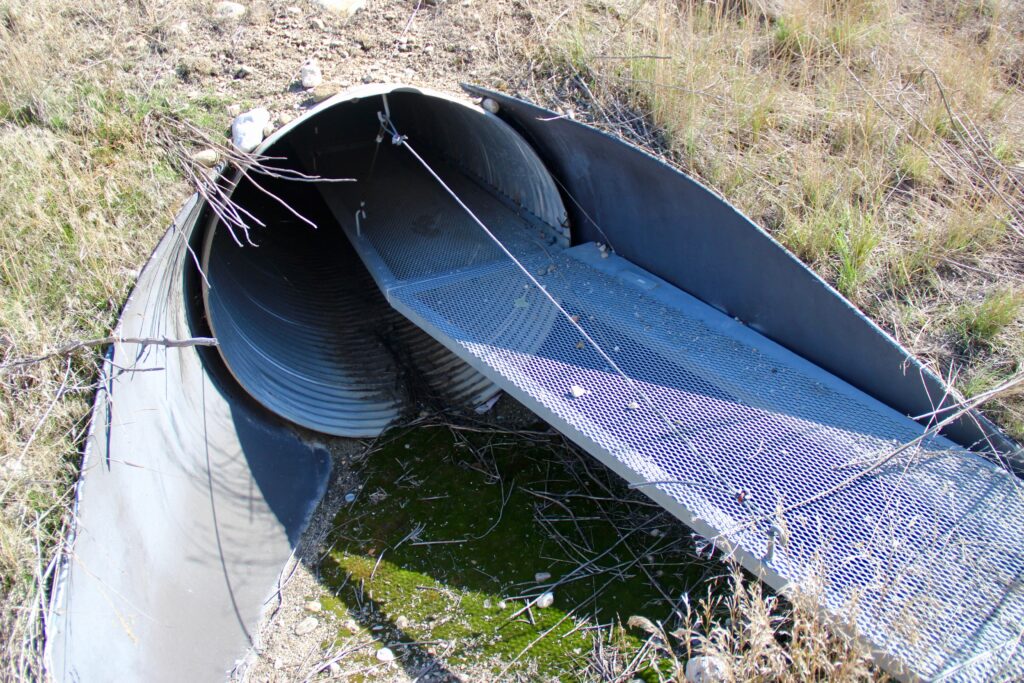
Critter shelves are installed in culverts to help wildlife cross roads safely (© Ben Goldfarb)
What are you planning for #WFMD2024?
I’ll probably celebrate by fly-fishing for brown trout in the Arkansas River, the gloriously unbound waterway that rushes past our home in Colorado. The state recently obliterated an old diversion dam just upstream of our town, so the Ark is running more freely than it has in decades — making it the perfect place to commemorate such an auspicious day for fish, and the rivers they depend upon.
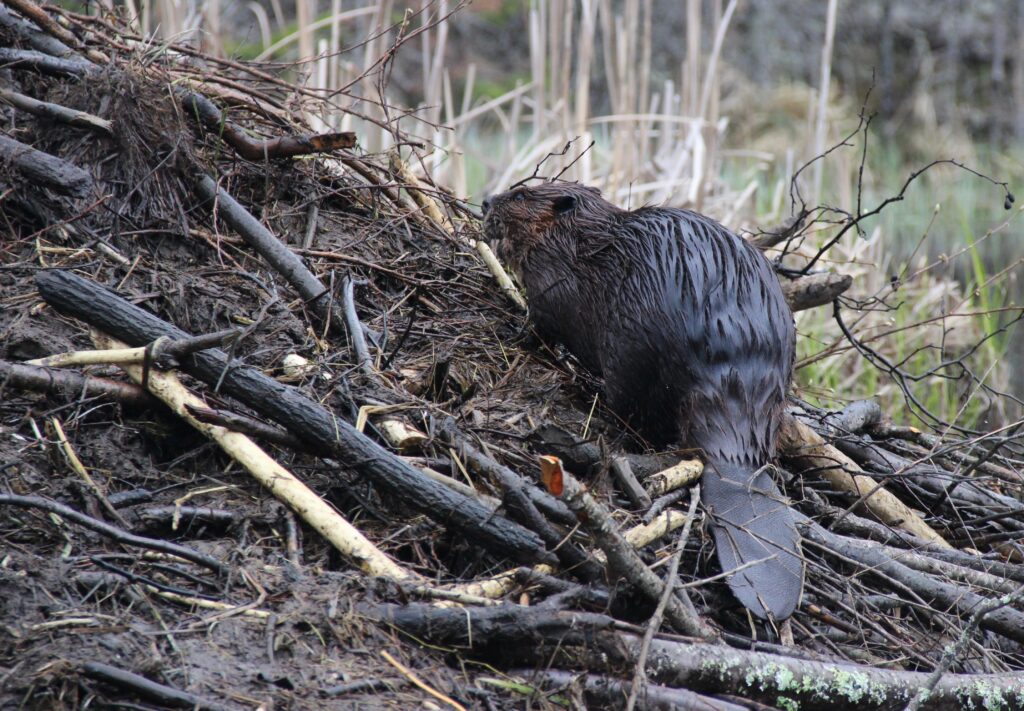
A beaver selecting the best sticks for its lodge (© Ben Goldfarb)
Read more Free Flow Champions and find inspiration for your World Fish Migration Day 2024 event.


